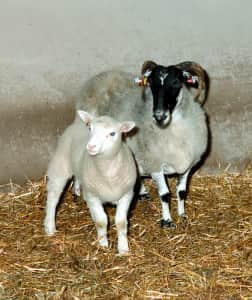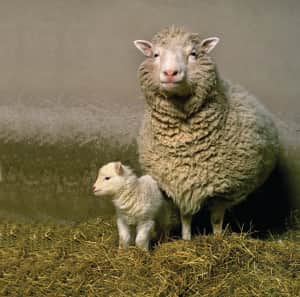Dolly the Cloned Sheep: when was she cloned, how was it done, what happened to her - and where is she now?
and live on Freeview channel 276
Sir Ian Wilmut, one of the creators of Dolly the Sheep has died at the age of 79 from complications from Parkinson's disease.
As tributes are being made to the "titan of the scientific world", how was Dolly created, and what happened to her?
Here is what you need to know.
Who is Dolly the Sheep?
Advertisement
Hide AdAdvertisement
Hide AdDolly the cloned sheep was a breakthrough in science when she was created, in a bid to refine genetic modification.
Dolly was produced from two separate cells and grown inside her surrogate mother, she was born on July 5, 1996.
Despite the successful experiment, Dolly has not been the trail blazer that many anticipated, as the experiment was supposed to lead to infinite, safe genetically modified mammals which would reduce the need for livestock to continue to be experimented on so frequently.
So, how was she made and what happened to her? This is what you need to know.
How was Dolly the Sheep cloned?
Advertisement
Hide AdAdvertisement
Hide AdDolly was the first mammal to be cloned using a process called somatic cell nuclear transfer.
The technique involved taking a cell from the mammary gland of a six-year-old Finn Dorset sheep and an egg cell taken from a Scottish Blackface sheep.


The process was multifaceted and involved various professionals, from surgeons to embryologists, farmers and other veterinary professionals.
The experiment was carried out at The Roslin Institute by a team led by Professor Sir Ian Wilmut.
Advertisement
Hide AdAdvertisement
Hide AdThe experiment deviated from the other process of embryo splitting which can only yield limited copies, instead there should have theoretically been an infinite number of clones from a single donor using the method utilised for Dolly.
The reason for the experiment was that researchers expected to be able to produce customizable, genetically uniform populations of animals with potential for biomedical research.
This would have ideally resulted in lesser experiments carried out on livestock.
The experiment was a clear success as Dolly had a white face and, had she been a direct descendant of her mother she would have had a black face.
Was Dolly the first cloned animal?
Advertisement
Hide AdAdvertisement
Hide AdDolly was not the first cloned animal, nor the first cloned sheep.
However, what made her so important was that she was the first grown from an adult cell and using the somatic cell technique.
Prior to Dolly, there was also experimental sheep produced by an embryo cell and born in 1984 in Cambridge.
The Roslin Institute had also produced embryonic cell grown sheep in 1995, named Megan and Morag.
Advertisement
Hide AdAdvertisement
Hide AdAt the time of Dolly’s creation, the institute also produced six other sheep from embryonic and fetal cells, but none in the same way Dolly had been produced.
What happened to Dolly?
Dolly was not announced to the world until February 1997, when the Roslin Institute also published its findings into the experiment.
She quickly became a celebrity of sorts, as the worldwide media reported on the scientific breakthrough and questions began to be asked about the ethical and moral pros and cons of cloning.
Following the initial public attention, Dolly went on to live a relatively normal life in her flock at the institute, while kept under surveillance by researchers.
Advertisement
Hide AdAdvertisement
Hide AdIn the years which followed, it became clear that Dolly had shorter telomeres than those of other sheep her age. Telomeres are the ends of DNA cells which protect the DNA from becoming damaged.
It was concluded that her short telomeres were due to being produced from an adult cell, as telomeres tend to shorten as we age.
Despite this, there were few indications that she was ageing at an abruptly quicker rate than other sheep and she went on to have six lambs with her partner, David.


Their first lamb, Bonnie, was born in April 1998, twins Sally and Rosie were born the following year and triplets Lucy, Darcy and Cotton the year after.
Advertisement
Hide AdAdvertisement
Hide AdShortly after the triplets were born in 2000, vets found that Dolly had an infection named Jaagsiekte sheep retrovirus (JSRV), which causes lung cancer in sheep.
She had contracted it during an outbreak of the virus at the institute. She continued to live a relatively normal life until early 2003, when she developed a cough and CT scans showed she had developed tumours in her lungs.
Dolly died through euthanasia on on 14th February 2003, at the age of six. The average sheep lives to between 10 and 12 years old.
Where is Dolly the cloned sheep now?
Dolly is now at the National Museum of Scotland in Edinburgh, where she remains one of the most popular exhibits.
Alongside Dolly, members of the public can also take part in an interactive exhibit on the ethics of creating transgenic animals featuring current research from The Roslin Institute.
Comment Guidelines
National World encourages reader discussion on our stories. User feedback, insights and back-and-forth exchanges add a rich layer of context to reporting. Please review our Community Guidelines before commenting.
